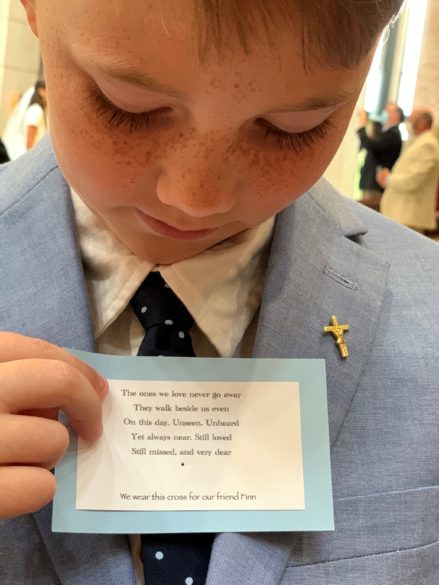
Featured photo . . . Remembering Finn


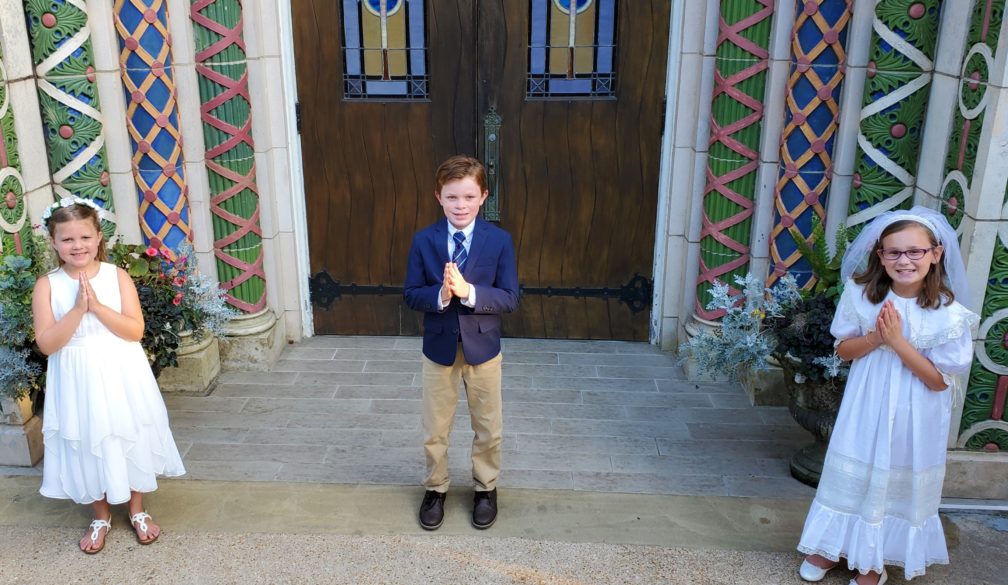
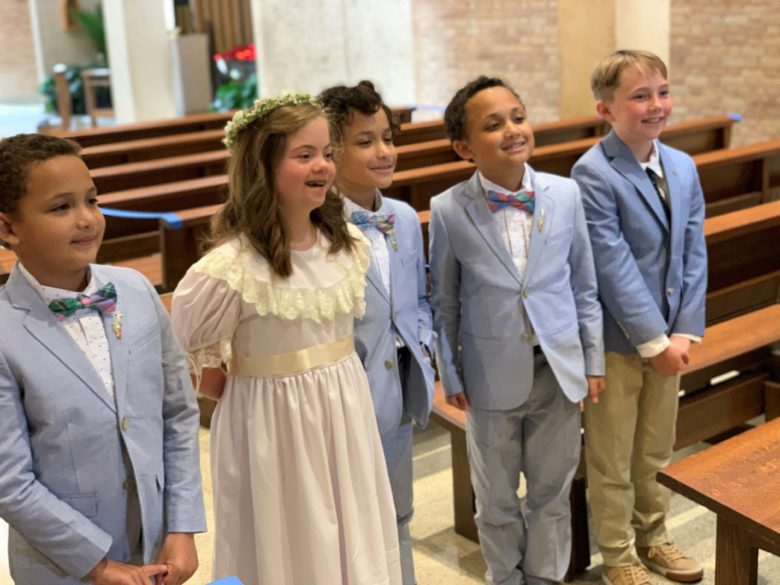
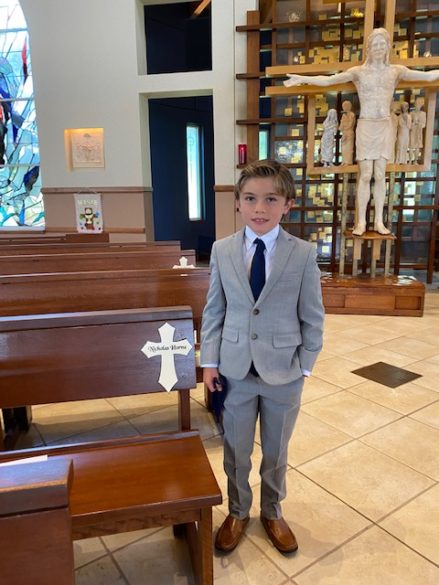
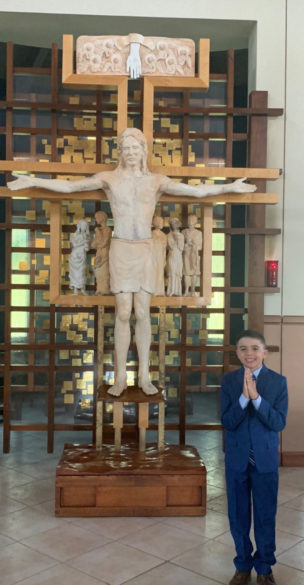
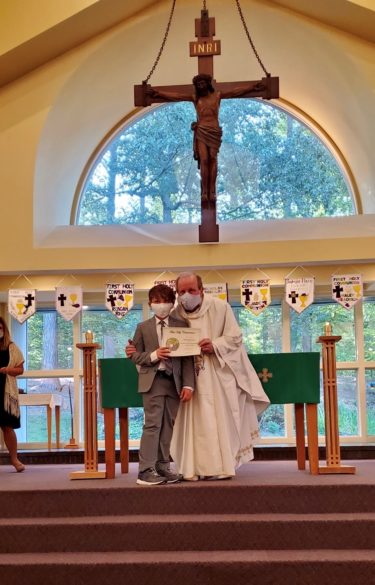
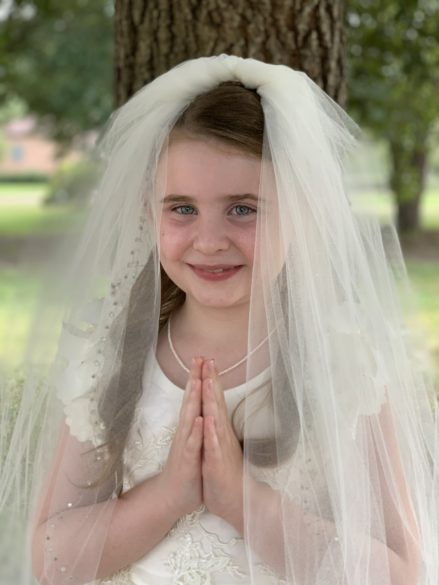
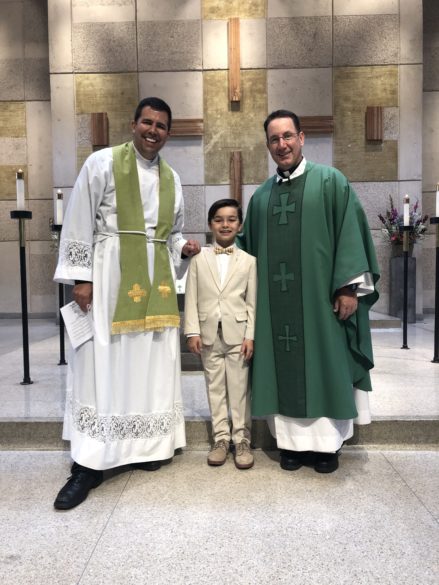
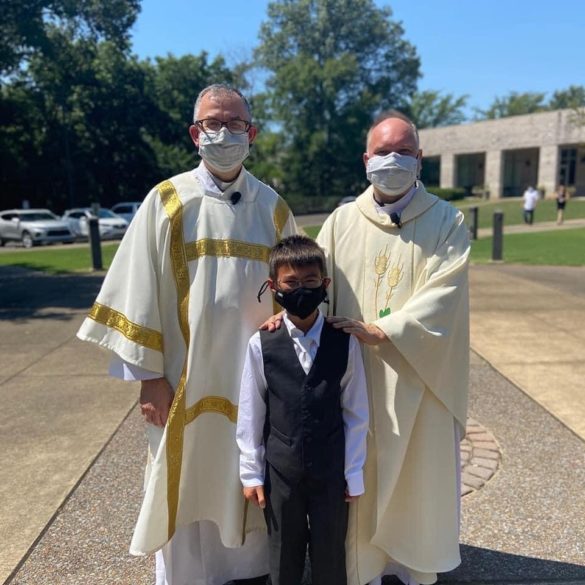

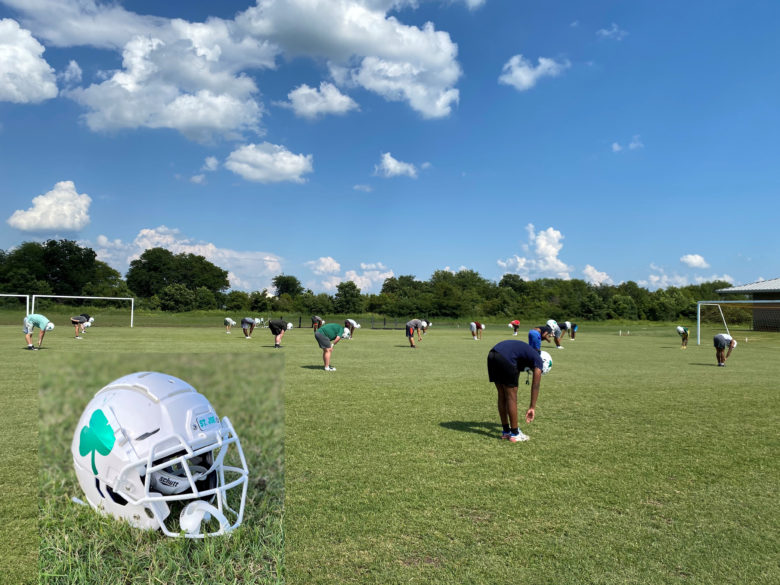

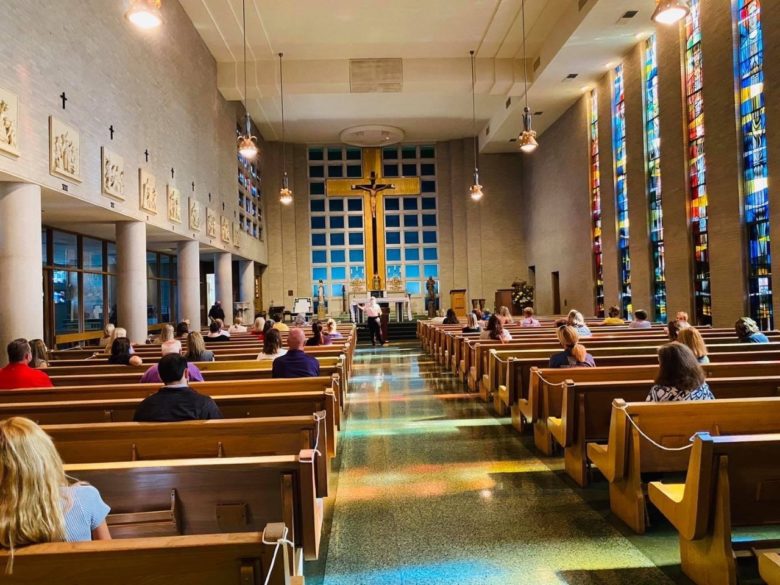
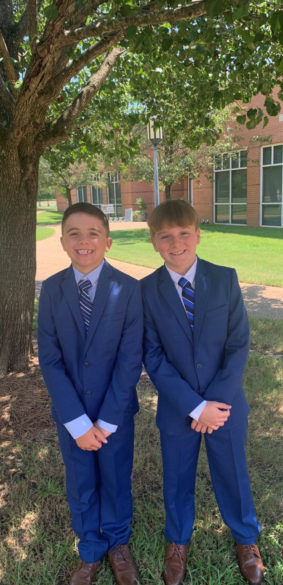
By Joanna Puddister King
NATCHEZ – In past summers you could find youth from around the country taking part in the annual Catholic Heart WorkCamp, but this year due to the COVID-19 pandemic many youth were sidelined from the service projects that brought them to much needed communities near and far that need help. But the St. Mary Basilica Natchez CYO group did not let it get them down, they found projects in their own hometown to tackle.
Between July 20 and July 31, 2020, groups of CYO members and adult sponsors worked to beautify the outdoor areas of Cathedral School and the yards of six elderly and homebound parishioners as well as help with a local Habitat for Humanity project.
Youth director, Carrie Lambert said, “This felt like it had more of a spiritual impact on the teens than going out of town to a work camp because the youth knew the people they were working for, asked questions about Habitat, and really felt like they had accomplished something and were appreciated when they were done.”
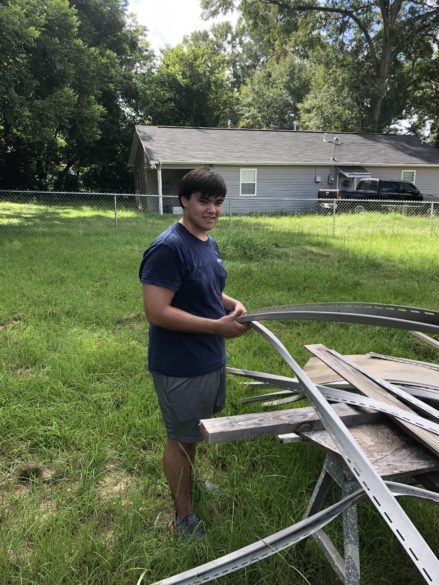
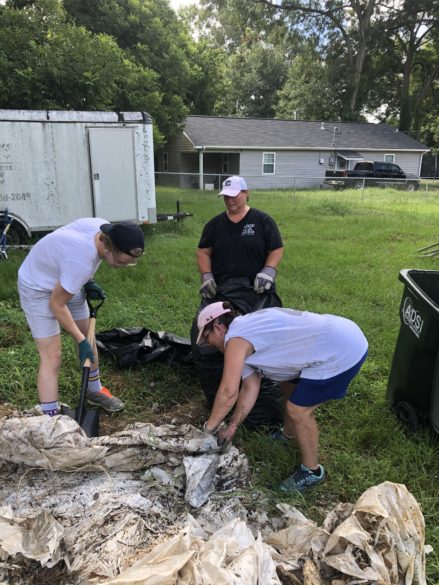
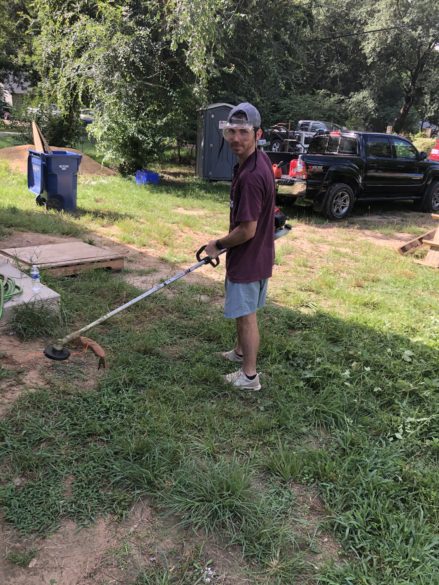
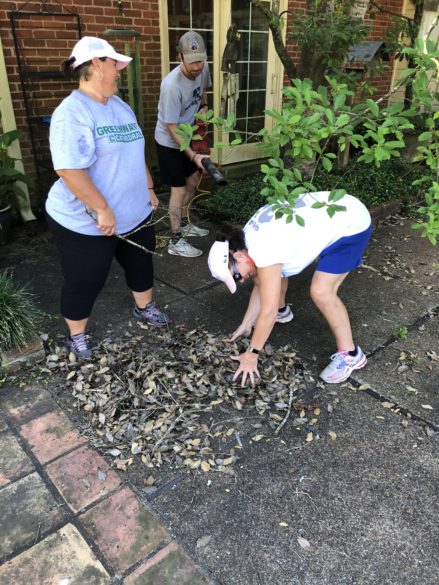

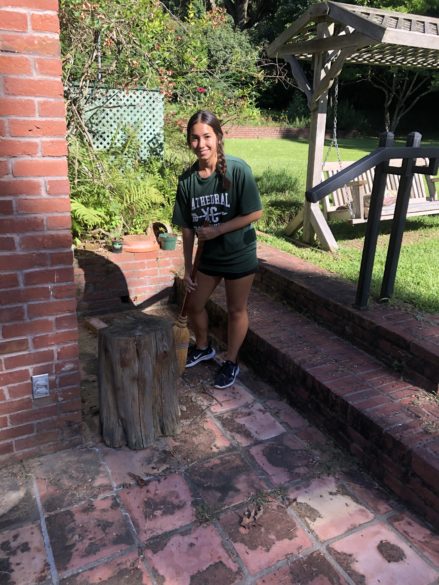
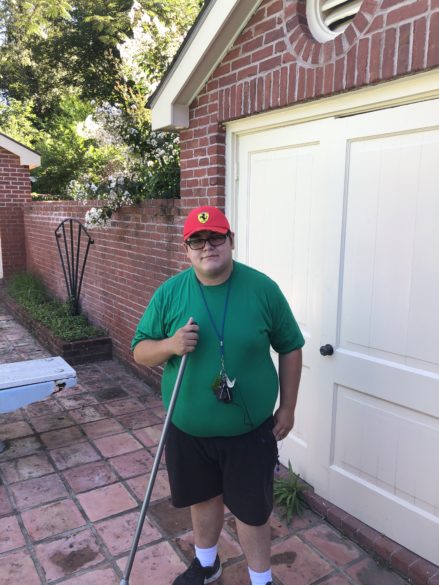
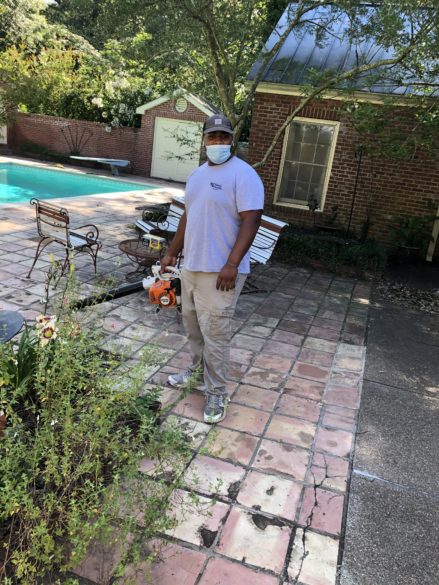
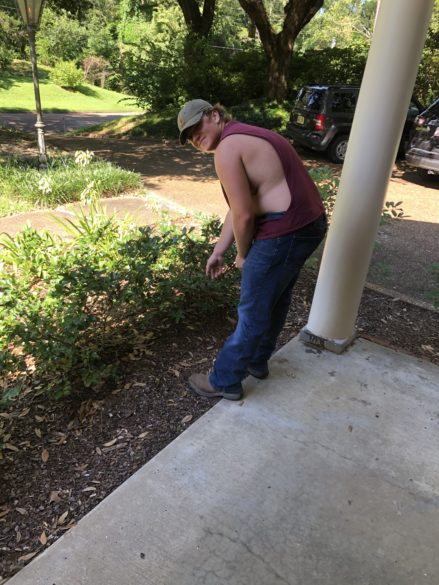
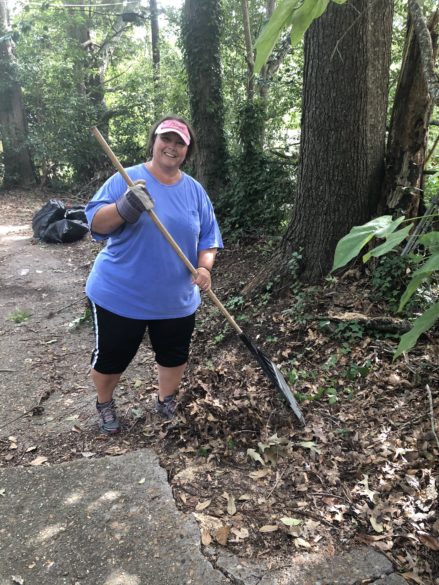

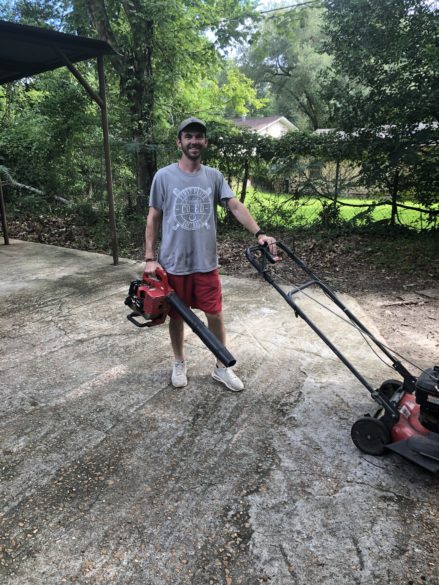
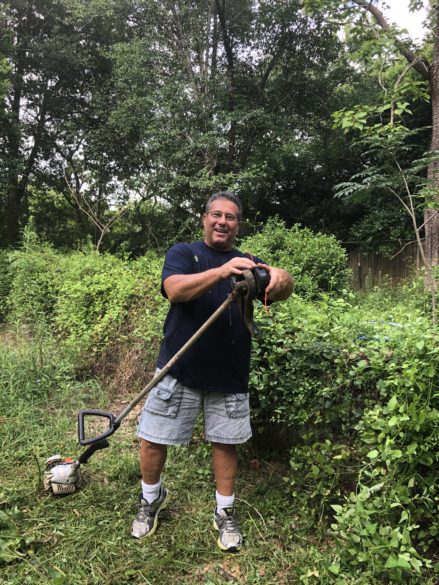
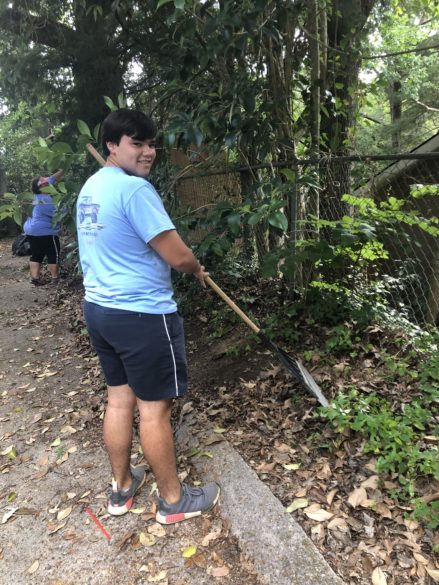
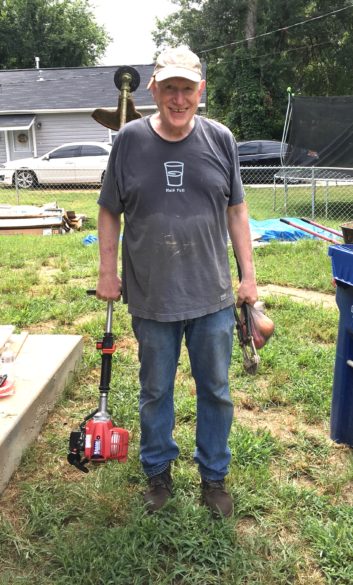
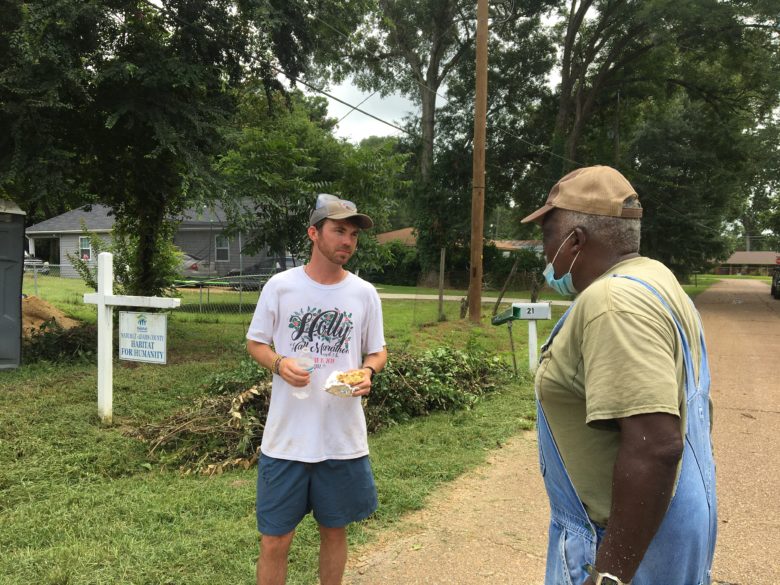
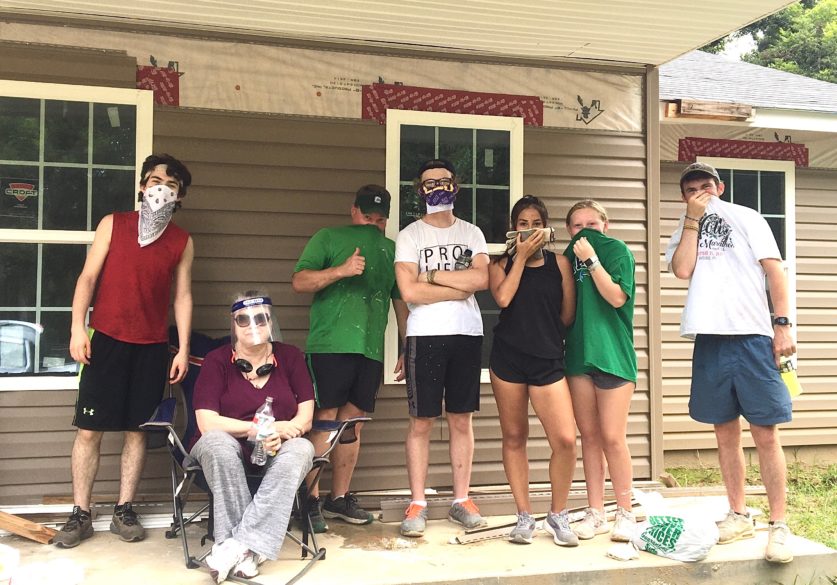
“They feel this way at Catholic Heart as well, but when the smiles looking back at you are from people you know – you’re touched in a different way.”
Bonding is a big part of mission trips, like those taken through Catholic Heart WorkCamp. Last year, the youth spent time in St. Croix in the Virgin Islands, working to beautify schools and churches damaged by Category 5 Hurricane Maria in Sept. 2017. After working, the youth enjoyed the beach and the sights of island life.
This year, the youth bonding experience was still special even though work was only completed in their own hometown.
“I loved watching the team work, the leadership and the hard work my teens put into this camp. I am so very proud of what they did and their attitudes while they were doing it.,” said Lambert.
“We at St. Mary are so blessed by the number of adults and parents who volunteer their time and energy to work alongside our teens throughout the year. The overall experience ended up feeling a bit like traveling on the Road to Emmaeus – feeling like we were accompanying one another and finding Christ in what we were doing and He was working there alongside us.”
Going forward the CYO will pair up with the Knights of Columbus for work days during the year.
“The main theme of our youth programs is ‘Faith in Action,’” said Lambert.
“Doing work for people simply because you want to help someone out is a wonderful way to put your ‘faith in action.’”
By Bishop Joseph R. Kopacz, D.D.
JACKSON – In the midst of the pandemic and other harsh realities, we recognize that all of us are in the same storm, but not in the same boat. There are significant differences in everyone’s life that require unique responses of all. At the center of last Sunday’s Scripture is the good news that no matter what boat we are in, or cave, as we heard of Elijah on Mount Horeb (1Kings 19), the living God desires to pass by and enter into the boats and caves of our lives.
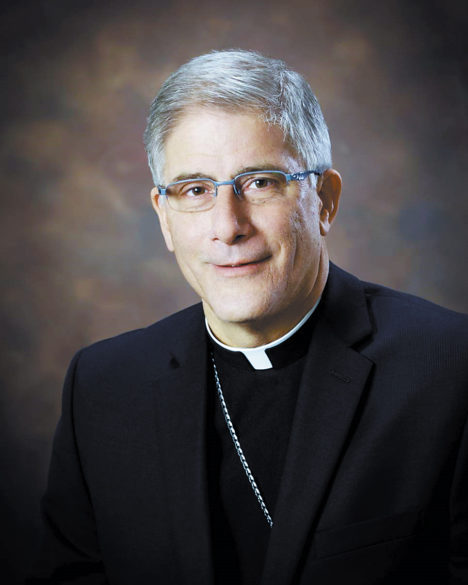
Can we see him, feel his presence, and hear him? Do we want to encounter him?
After the multiplication of the loaves and fishes it was compelling to realize that Jesus himself dismissed the crowds after sending his apostles ahead of him on the Sea of Galilee. Here we have the Word of life, the Bread of life, serving as a minister of hospitality. Dismissing 5,000 people not counting women and children, nearly ranks as another miracle. This is the God who calls us by name and holds us in the palms of his hands. (Isaiah 41:13) But it is the storm on the sea of Galilee that assures us that Jesus Christ is present to us in the sudden squalls that strike without warning. (Matthew 14:22-33) As Jesus walks across the water to his storm-tossed apostles the unfolding drama reveals the contrast between the fear that paralyzes and the fear that saves. Without the Lord even the hard-boiled fishermen were going down in panic. With a hand clasp (Matthew 14:31) to save Peter from drowning, the Lord and he settled into the boat, and immediately the peace that only God can give ruled the wind and waves.
This was not the first time that Jesus accompanied Peter through his fears. On the shores of this same lake, Jesus invited himself into his fishing boat to better preach the word to the assembled throng. (Luke 5:1-11) He then directed him back into the deep to cast his nets for a catch that brought Peter to his knees. “Leave me Lord, for I am a sinful man.”(Luke 5:8) Actually the preaching of Jesus of Nazareth had softened his heart to be receptive to the gift of holy fear and the ensuing life-giving words. “Follow me and I will make you fishers of men.” Like Peter in both encounters with the Lord, we too must take a step toward Jesus and follow his lead through the fog and gloom of uncertainty and anxiety that confronts us.
In the letter to the Romans, last Sunday’s second reading, the Lord is near to St. Paul in his grief over the painful realization that most of his fellow Israelites are rejecting his beloved Savior as the long-awaited Messiah. It was a heavy cross for St. Paul because he loves the Lord and his people and is deeply torn. “I have an infinite sadness and an incessant grief that torments my heart.” (Romans 9:1-5)
The pandemic hit like a sudden squall and now it has settled in like a thick gloom that will not lift. Like St. Paul, currently, a growing number of people are feeling a similar pain with the loss of life, means, in some cases the work of a lifetime, along with the rhythms of daily life. This is a daunting reality that can push us to the margins of our internal and external resources. Yet, it is also an invitation to deepen our faith in the Lord’s nearness in the face of fear. Can we hear his loving words that dispelled the distress of his apostles?
“Calm yourselves. Do not fear. It is I.” When we are feeling most vulnerable and fragile, our faith by the grace of God motivates us not to allow ourselves not to sink into fear. The amazing grace that allays our fears, also gives us the peace of Christ which allows us to walk by faith, and not by sight (2Corinthians 5:7), that shines on us who live in darkness and in the shadow of death. With our options narrowed and our movements restricted, cannot God penetrate this cloud of unknowing to help us nurture our faith and enter more deeply into intentional concern for others, and so give witness to the living Lord.
With the difficult decisions facing many educators, parents and students for the fall semester, allowing the Lord to clasp our hand is a far better state of being than sinking into our own emotional sludge. This is the difference between fear and holy fear, the capacity to hear the Lord’s words that He is near, and to act upon this faith-filled knowledge.
Por Obispo Joseph R. Kopacz, D.D.
En medio de la pandemia y otras duras realidades, reconocemos que todos estamos en la misma tormenta, pero no en el mismo barco. Hay diferencias significativas en la vida de todos, que requieren respuestas únicas de todos. En el centro de las Escrituras del domingo pasado está la buena noticia en que no importa en qué barco estemos o en qué cueva, como oímos de Elías en el monte Horeb (1 Reyes 19), el Dios viviente desea pasar y entrar en los barcos y las cuevas de nuestras vidas.
¿Podemos verlo, sentir su presencia y escucharlo? ¿Queremos encontrarnos con él?

Después de la multiplicación de los panes y los peces, fue convincente darse cuenta de que Jesús mismo despidió a las multitudes después de enviar a sus apóstoles delante de él en el mar de Galilea. Aquí tenemos la Palabra de Vida, el Pan de Vida, sirviendo como ministro de hospitalidad. Al despedir a 5,000 personas sin contar a las mujeres y los niños, casi es otro milagro. Este es el Dios que nos llama por nuestro nombre y nos sostiene en las palmas de sus manos. (Isaías 41:13)
Pero es la tormenta en el mar de Galilea lo que nos asegura que Jesucristo está presente para nosotros en las repentinas tormentas que golpean sin previo aviso. (Mateo 14:22-33). Mientras Jesús camina sobre el agua hacia sus apóstoles azotados por la tormenta, el drama que se desarrolla revela el contraste entre el miedo que paraliza y el miedo que salva. Sin el Señor, incluso los pescadores duros caían presa del pánico. Con un apretón de manos (Mateo 14:31) para salvar a Pedro de ahogarse, el Señor y él se acomodaron en la barca, e inmediatamente, la paz que solo Dios puede dar dominó el viento y las olas.
Esta no fue la primera vez que Jesús acompañó a Pedro a través de sus temores. En las orillas de este mismo lago, Jesús se invitó a sí mismo a subir a su barco de pesca para predicar mejor la palabra a la multitud reunida. (Lucas 5:1-11) Luego lo dirigió de regreso al abismo para que echara sus redes en busca de una pesca que puso a Pedro de rodillas. “¡Apártate de mí, Señor, ¡porque soy un pecador!” (Lucas 5:8). En realidad, la predicación de Jesús de Nazaret había ablandado su corazón para que fuera receptivo al don del temor santo y las subsiguientes palabras vivificantes. “Síganme y yo los haré pescadores de hombres”. Como Pedro en ambos encuentros con el Señor, nosotros también debemos dar un paso hacia Jesús y seguir su ejemplo a través de la niebla y la penumbra de la incertidumbre y la ansiedad que nos enfrenta.
En la carta a los Romanos, la segunda lectura del domingo pasado, el Señor está cerca de San Pablo en su dolor por la dolorosa comprensión de que la mayoría de sus compañeros israelitas están rechazando a su amado Salvador como el Mesías tan esperado. Fue una cruz pesada para San Pablo porque ama al Señor y a su pueblo y está profundamente desgarrado. “tengo una gran tristeza y en mi corazón hay un dolor continuo”. (Romanos 9:1-5).
La pandemia golpeó como una ráfaga repentina y ahora se ha asentado como una densa oscuridad que no se disipa. Como San Pablo, en la actualidad, un número creciente de personas sienten un dolor similar con la pérdida de la vida, significa, en algunos casos, el trabajo de toda una vida, junto con los ritmos de la vida diaria. Esta es una realidad abrumadora que puede llevarnos al margen de nuestros recursos internos y externos. Sin embargo, también es una invitación a profundizar nuestra fe en la cercanía del Señor frente al miedo. ¿Podemos escuchar sus amorosas palabras que disiparon la angustia de sus apóstoles?
“¡Calma! ¡Soy yo: no tengan miedo!”; Cuando nos sentimos más vulnerables y frágiles, nuestra fe por la gracia de Dios nos motiva a no permitirnos no hundirnos en el miedo. La gracia asombrosa que apaga nuestros temores, también nos da la paz de Cristo que nos permite caminar por fe, y no por vista (2Corintios 5:7), que brilla sobre nosotros que vivimos en tinieblas y en la sombra de la muerte. Con nuestras opciones reducidas y nuestros movimientos restringidos, ¿no puede Dios penetrar esta nube de desconocimiento para ayudarnos a nutrir nuestra fe y entrar más profundamente en la preocupación intencional por los demás, y así dar testimonio del Señor vivo?
Con las difíciles decisiones que enfrentan muchos educadores, padres y estudiantes para el semestre de otoño, permitir que el Señor nos estreche la mano es un estado mucho mejor que hundirnos en nuestro propio fango emocional. Ésta es la diferencia entre el temor y el temor santo, la capacidad de escuchar las palabras del Señor de que Él está cerca y de actuar de acuerdo con este conocimiento lleno de fe.
By Joanna Puddister King
JACKSON – The Catholic Foundation’s 38th annual Bishop’s Cup Golf Scramble is slated for September 1, 2020 at the Lake Caroline golf course in Madison.
Due to COVID-19, the Catholic Foundation has been closely following guidance from the Centers for Disease Control (CDC) and the Mississippi Department of Health, as well as working with the Lake Caroline Golf Club to ensure a safe environment for golfers and staff during the Bishop’s Cup golf scramble. New protocols will be followed for this year’s event to avoid large gatherings and improve the safety of everyone involved.
Tee times will be determined to assure safety restrictions are upheld.
Rebecca Harris, executive director of the Catholic Foundation says, “We hope that our golfers return and come enjoy a day out on the course. We hope the day brings back some normalcy to their lives.”

New this year is the Bishop’s Cup website where golfers can sign up to sponsor the event, register each golfer, and purchase mulligans.
Mulligans have always been a bonus part of the tournament. “It is a chance for a golfer to have a ‘do-over’ when they hit a bad shot,” says Harris. For the Bishop’s Cup, mulligans are $10 each with a limit of four.
The Bishop’s Cup website can be found at https://one.bidpal.net/bishopscup2020/welcome.
The site will also include an online virtual auction that should prove to be quite fun. Bidding on items will begin a week before the tournament and will end the night of the event. Winners of the tournament, as well as auction items, will be posted to the website.
Harris says that this year the auction will be paired down from its normal size. “We appreciate all of the businesses around the diocese who have helped make our auction such a success through the years. However, we knew that COVID-19 has affected many of those businesses, so we decided to have a small auction.”
The proceeds from this year’s tournament will benefit the Catholic Foundation Grant Trust. The Foundation manages 378 trusts for the Diocese of Jackson, which help Catholic parishes, Catholic schools, and other Catholic organizations under the auspices of the Catholic Diocese of Jackson. The goal this year is to raise $35,000 through the golf scramble.
For more information, please contact Rebecca Harris, executive director of the Catholic Foundation, at 601-960-8477. Tickets and sponsorships can be purchased online or contact Julia Williams, assistant development director at 601-960-8481 for assistance.
By Berta Mexidor and Joanna Puddister King
JACKSON – On Aug. 7, 2019 at least four Catholic parishes were shaken after U.S. Immigration and Customs Enforcement agents raided chicken processing plants across the state, arresting 680 undocumented workers. The day left many children in fear and pain on their first day of school, as they were left with no place to go with their families taken from them.
As some were released from ICE custody to care for their children, a new reality set in. The loss of income, along with an unforeseeable future and questions on how their families may survive without loved ones in ICE custody.
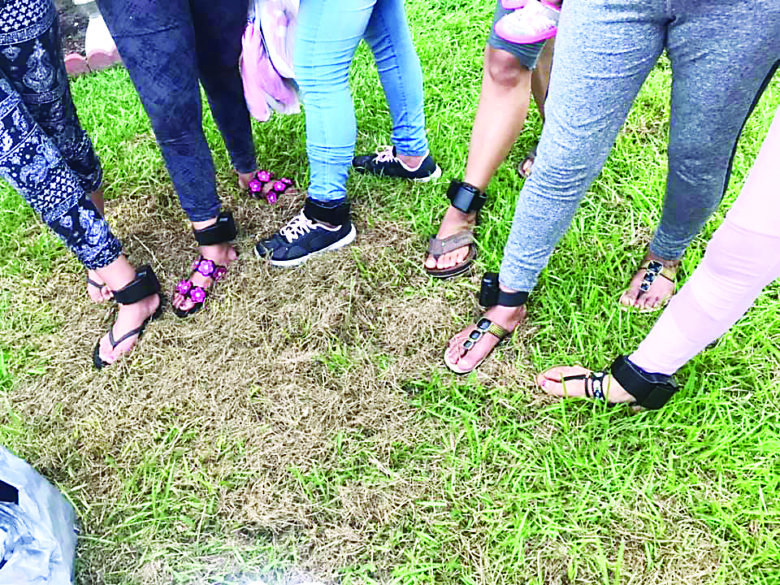
About seven months later, between court appearances, possible deportation, and legal incertitude, pain for these communities came again, now in the form of an illness affecting everyone without discrimination of legal status. But for the families of affected families in Canton, Forest, Morton, and Carthage, the fear of COVID-19 was less than the fear for immigration officials.
Hundreds have gotten sick, and friends and family members have died due to COVID-19. Many undocumented immigrants are avoiding tests and hospitals regardless of the authorities’ promises of not to check legal status during medical tests due to the immense fear the ICE raids caused.
The situation is not localized only to Mississippi, but around the country too. Several of the families affected by the raids migrated to other states due to fear of another raid. The church’s membership was reduced by this migration as well.
Right after the raids last August, the church became a humanitarian hub for food, goods and financial resources to pay rent and utilities. At that moment, the immigrants noted that God was sending several helping hands, even a Cardinal from Guatemala.
On Nov. 7, 2019, Rep. Bennie Thompson held a congressional hearing at Tougaloo College in Jackson. He was accompanied by two more representatives; as well as, state, community and religious leaders, including Father Odel Medina, ST of St. Anne Carthage, to question Homeland Security Investigations Special Agent Jere Miles about the mishandling of the massive ICE raid months earlier.
During the hearing, Father Medina took the opportunity to read a letter from a child in his parish, who was hurting and traumatized in the aftermath of the raids.
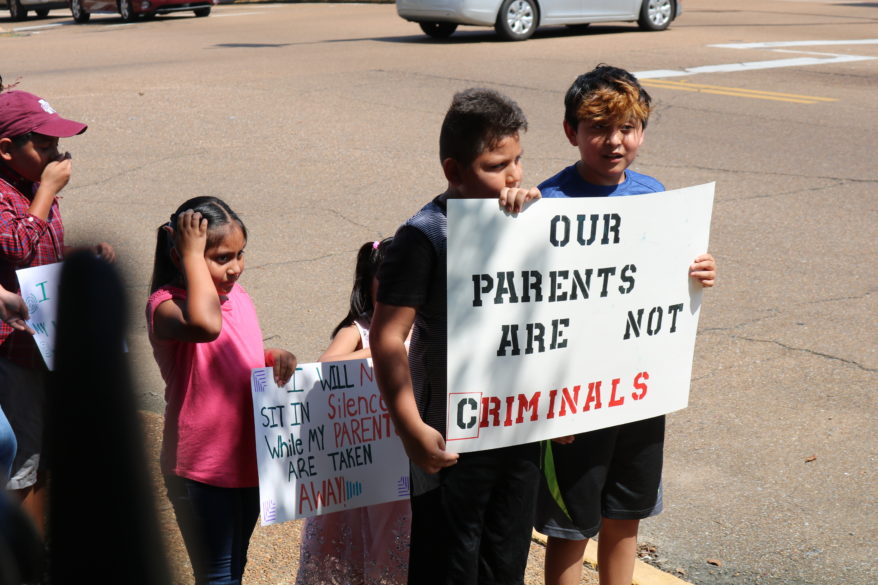
Shortly before Christmas, Cardinal Álvaro Ramazzini Imeri of Guatemala, visited the affected parish communities with a message that “God never abandons you.” He consoled families affected by the raid with words of the Gospel and accompanied them during three days of the advent season, participating in “Las Posadas” – a reenactment of Mary and Joseph’s attempt to find lodging before the birth of Jesus.
While in Mississippi, Cardinal Ramazzini spoke with media, advocating for a “migration policy with a human face” and spoke of the economic conditions that force many to leave their home country and asked for the elimination of the custom where immigrants are treated as criminals, without having a criminal record.
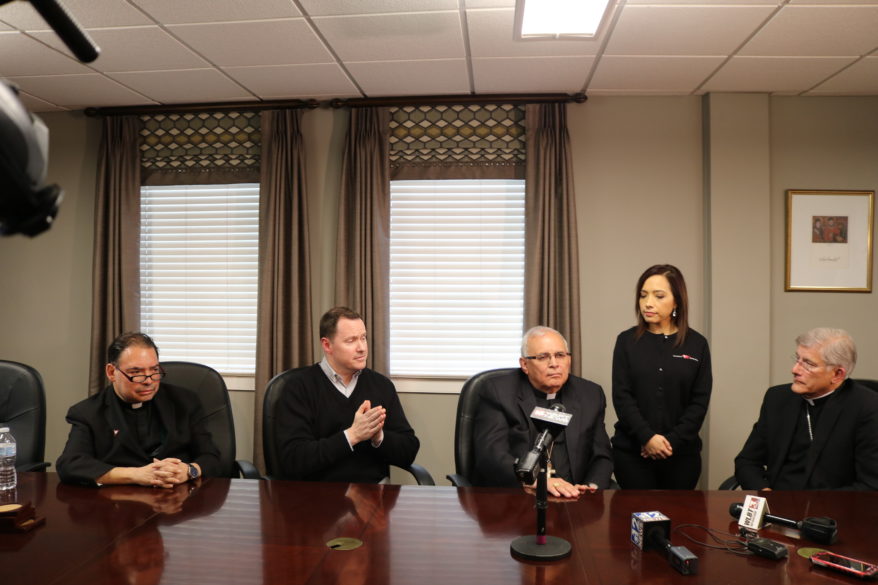
During the same visit, Catholic Extension, which sponsored Cardinal Ramazzini’s visit, announced their Holy Family Fund, a relief program that assists families in the United States who are financially dependent on a parent that has been detained or deported for immigration reasons. Through the fund, Catholic Extension has been instrumental in ensuring the flow of aid to support delivery of basic resources to the churches serving the humanitarian and spiritual needs of the families in Mississippi affected by the ICE raids.
The help from Catholic Extension, Catholic Charities and many within the Catholic community has helped affected families in the parishes of Canton, Carthage and Forest-Morton communities.
In Forest and Morton, close to 120 families were affected, and now 20 of those families have been affected by COVID-19. Father Roberto Mena, ST sacramental minister of St. Michael Forest says that ”the loss of jobs and an uncertain school year for the children” is a huge challenge right now for his community.
Blanca Peralta coordinates the activities of the Hispanic community, under the leadership of Father Mike O’Brien, pastor of Sacred Heart Canton. Both began offering aid even as the raids were still being conducted. Father Mike and Peralta, along with a network of volunteers including Patti Greene, Jerry Perez and John Scanlan, have been helping 120-150 affected families since the raids. They have been providing food, payments for rent and utilities, and pastoral care.
The team from Sacred Heart Canton, along with constituents from Grace Episcopal Church, were recently announced as nominees for the Lumen Christi award from Catholic Extension for their work after the ICE raids.
For Father Mike, the decision to close his church doors for a period of time after COVID-19 hit earlier this year was very painful. His main concern was how to continue the labor of helping those affected by the raids.
Peralta navigated the struggle due to the virus, but Sacred Heart never stopped helping. They continued assisting by phone, by mail and by accompanying immigrants to the hospital and court appointments. Additionally, every Wednesday since June, they have distributed 300 boxes of food, fruits and vegetables, provided by Partners of Mississippi.
She says that families deeply felt the closure of the church. “They understand perfectly why, but the church ground is the only place where they feel that they belong. In church they can meet, share, hug, be happy and enjoy a moment of protection from the Almighty Father,” Peralta said.
Since Aug. 9, Sacred Heart has opened two services for Mass in Spanish, with space for only 40 people. The challenge now is communicating the importance of social distancing and sanitary measures, as well as, calming the fears immigrants manifest in going to the hospital for tests, says Peralta.
Father Odel, of St. Anne Carthage, has also been an advocate for families affected by the raids. He has also been distributing humanitarian aid and coordinating volunteers from around the country to those affected by the raids in his community since last August. Additionally, he fought COVID-19 in April and has been sharing his story with migrants, so they will not be afraid to seek the help they need if they contract the virus. He says that in some instances, entire families have been infected with COVID-19 in his community.
In total, Father Odel says approximately 80 families at his parish were affected by the raids and now COVID-19. The challenge for the whole undocumented community is ”… to break the stereotype propagated by some political outlets, of not being hard working individuals. They get arrested while working, and during the pandemic, when most people were home, they were working,” said Father Odel. “The chicken plants are considered essential industries; therefore, immigrants were needed, regardless of legal status.”
Father Odel says the biggest challenge for his community now is “the consequences of family separation, now worsened by COVID’s restrictions.”
After a year, the undocumented population has mixed feelings of pain and faith. Due to their lack of documentation, they lost jobs and some their freedom last August. Now, due to COVID-19, many in chicken factories and agricultural harvesting are considered essential workers. Many hope that this situation can soften the laws toward immigrants looking for an honest way of living.
Still, the community has faith even after the trauma suffered one year ago lingers on.
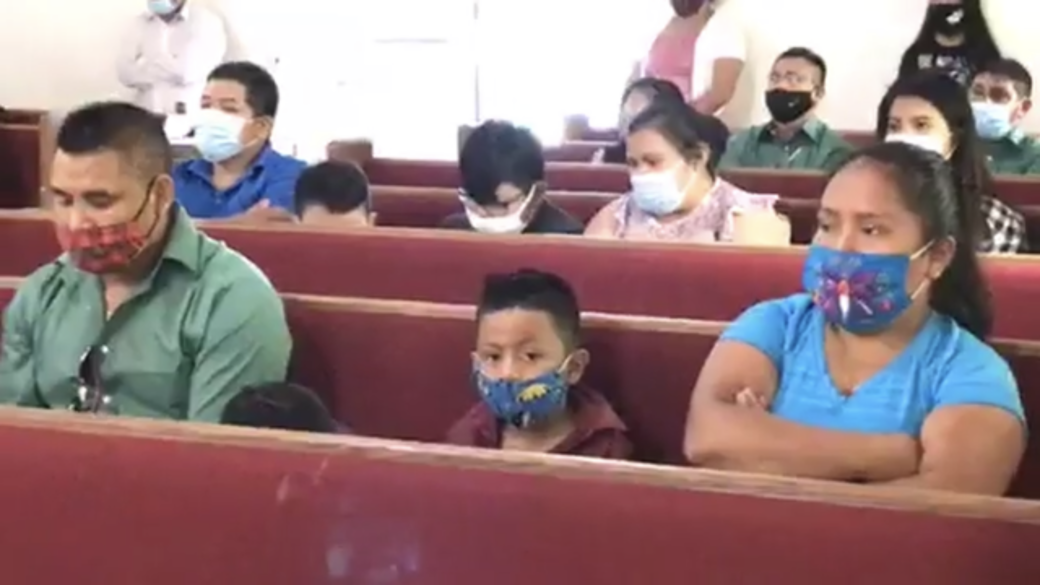
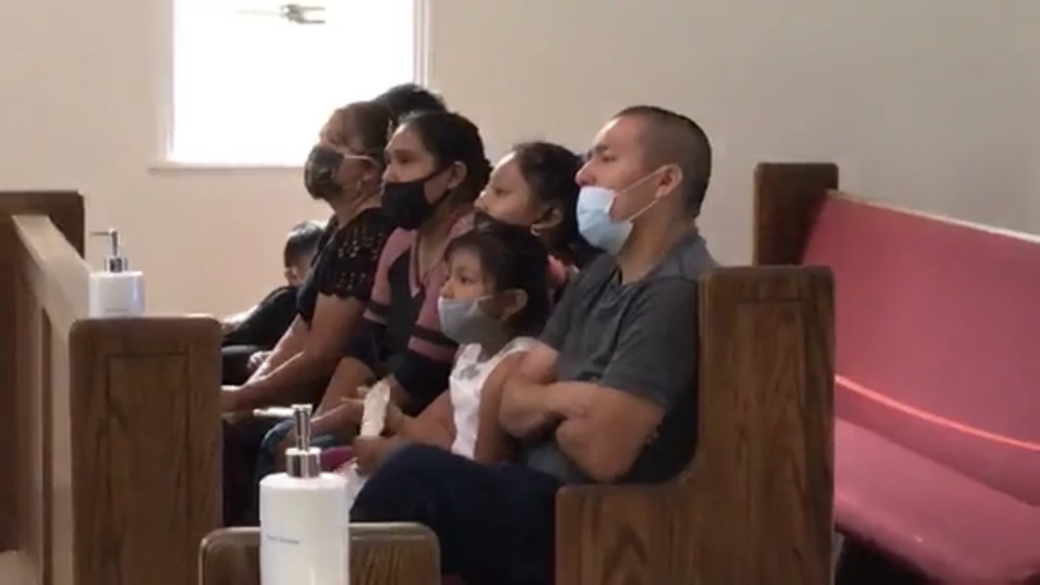
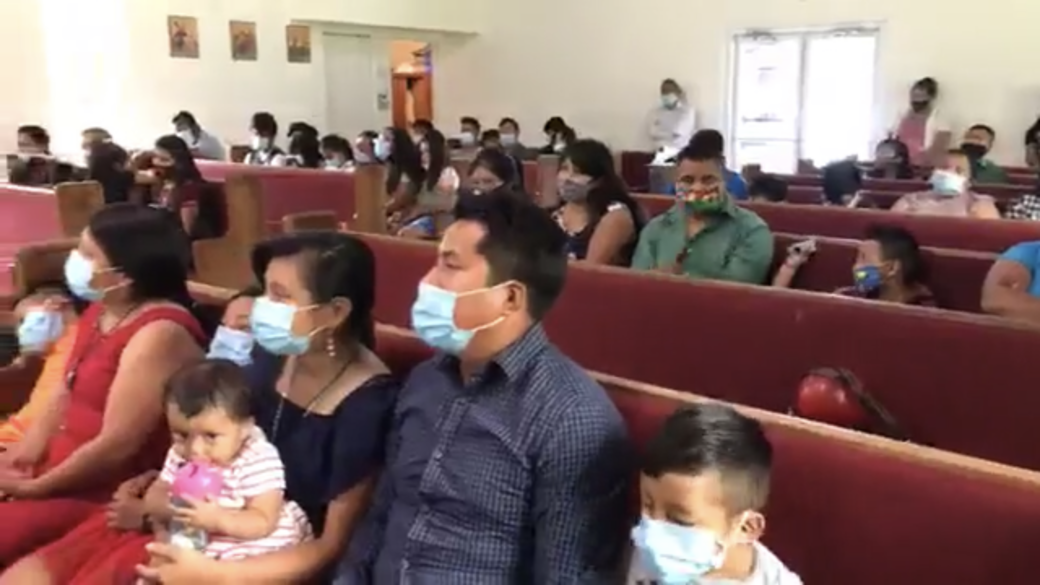
By Joanna Puddister King
JACKSON – In January 2020, the Diocese of Jackson established a hotline system for individuals to report potential fraud, compliance issues, ethics violations and human resource issues.
The use of a hotline has been discussed for several years at the National Diocesan Fiscal Managers’ Conference, that members of the diocese attend. A hotline is considered a ‘best practice,’ as having an independent hotline can help alert companies to and reduce the possibility of inappropriate or illegal actions.
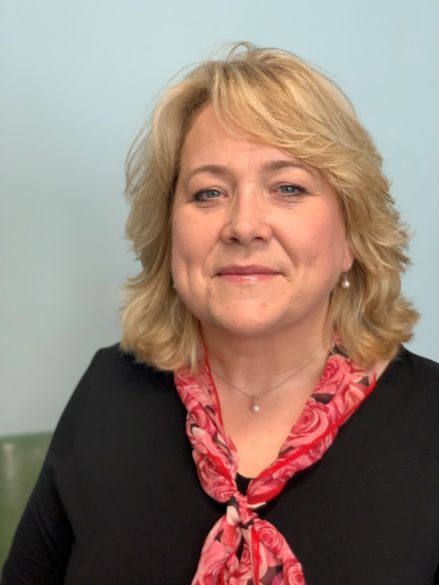
Carolyn Callahan began researching hotline platforms after presentations at the conference, even before she entered her current role as director of temporal affairs at the diocese in May of 2019. Previously she acted as controller, internal auditor, and coordinator of special projects for the diocese, director of finance for St. Joseph School in Madison, and as an accounting support person for all Catholic Schools.
“Although we have always had procedures in place to handle complaints, events of the past few years helped us see past any potential misuse of the hotline, so our parishioners and employees have a confidential and effective way to report issues,” says Callahan.
The diocese hotline system is operated by Lighthouse Services. For the past 15 years, Lighthouse Services has maintained ethics, safety, and fraud hotlines and now services over 4,100 organizations between the U.S. and abroad.
Any concerns relative to financial misconduct, fraud, compliance issues or human resources issues within the diocese may be reported anonymously by calling the hotline’s toll-free number or filed online. Lighthouse Services will field and process the information reported.
Immediately upon receipt of a complaint, Lighthouse Services will email three designated recipients.
“Two recipients are chancery employees and one is a diocesan priest who does not work for the chancery office,” says Callahan.
“If one of the three recipients are named in the complaint, that person does not receive the email notification and cannot access the report.”
After receipt, the three designated recipients access the complaint through the secure Lighthouse Services web portal. If the reporter files anonymously, the designees only see a PIN number, but never a name. Communication occurs between the reporter and designees via the Lighthouse online portal. Files and other documentation can be uploaded for review.
“Discussion ensues and a plan is created for investigating the claim either internally or using an outside investigator,” says Callahan.
“Depending on the results of the initial investigation the diocesan attorney and/or law enforcement are notified.”
Callahan’s hope is that anybody concerned about fraud, compliance issues, ethics violations and human resources issues will feel comfortable knowing they have an objective and confidential platform to file a claim that will be investigated immediately.
“Questions asked within the filing process are meant to only identify the complaint and allow the reporter to give as much or as little detail as desired. Use of the hotline gives us the ability to know about and respond to complaints in a timely and effective manner,” says Callahan.
To make a report individuals can visit www.lighthouse-services.com/jacksondiocese or call toll-free 888-830-0004 (English) or 800-216-1288 (Spanish).
Vicar general, Father Lincoln Dall, who works closely with Callahan, says “The Lighthouse hotline is part of our overall strategy of strengthening our control procedures and oversight of the assets and gifts that God and his people have entrusted to our diocese, our parishes and schools. We have been improving upon such policies, procedures and controls within the past two years and continue to do so through the current agreement we have with the federal government.”
The hotline information is published regularly in Mississippi Catholic and at least quarterly in parish bulletins. It can also be found at www.jacksondiocese.org.
By George P. Matysek, Jr
BALTIMORE (CNS) – Thirteen years after naming a new residence hall at Loyola University Maryland in honor of the Catholic author Flannery O’Connor, Jesuit Father Brian Linnane, the university’s president, removed the writer’s name from the building.
The structure will now be known as “Thea Bowman Hall,” in honor of the first African American member of the Franciscan Sisters of Perpetual Adoration.
Sister Thea, a Mississippi native, was a tireless advocate for greater leadership roles for Blacks in the Catholic Church and for incorporating African American culture and spiritual traditions in Catholic worship in the latter half of the 20th century. Her sainthood cause is under consideration in Rome.
O’Connor, a Southern Gothic writer who died of lupus in 1964 at age 39, is recognized as one of the greatest short-story writers of her era, one whose work often examined complex moral questions.
Concerns about her use of racist language in private correspondence prompted more than 1,000 people to sign an online petition asking Loyola to rename the residence hall.
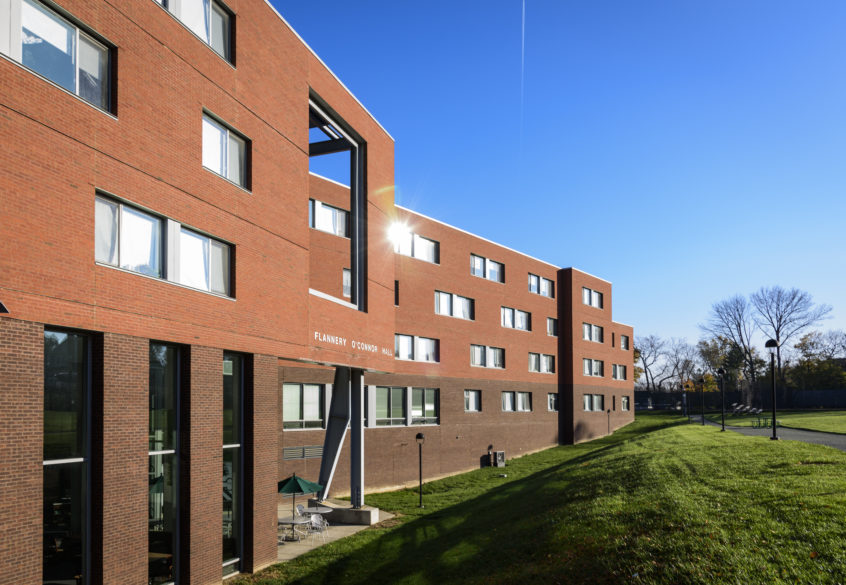
Father Linnane said it was a difficult decision and that the issue of O’Connor and race is very nuanced.
“I am not a scholar of Flannery O’Connor, but I have studied her fiction and non-fiction writings,” he told the Catholic Review, Baltimore’s archdiocesan news outlet. “Particularly in her fiction, the dignity of African American persons and their worth is consistently upheld, with the bigots being the object of ridicule.”
The priest noted some of the new disclosures about O’Connor’s use of racist language date to the 1940s when she was a teenager.
“They don’t take into account any evolution in her thinking,” he said.
The priest still felt the need to be sensitive to concerns, especially from students, about O’Connor’s use of racist language and an admission in her correspondence that she did not like people of color.
“A residence hall is supposed to be the students’ home,” Father Linnane said. “If some of the students who live in that building find it to be unwelcoming and unsettling, that has to be taken seriously.”
He said he hoped the decision is not viewed as a wholesale repudiation of O’Connor’s legacy and noted that professors will continue to assign the study of her writings.
“We were looking to name the building for someone who reflects the values of Loyola and its students at the present time and whose commitment to the fight for racial equality – from an intellectual point of view and from a faith perspective – would be more appropriate for the residence hall.”
Loyola is undergoing a larger review of all the names of its buildings and a university committee advised him on the renaming proposal.
Angela Alaimo O’Donnell, a former Loyola professor who currently serves as the associate director of the Francis and Ann Curran Center for American Catholic Studies at Fordham University in New York, is spearheading an effort for the university to reconsider its decision.
O’Donnell, an expert on O’Connor’s life and writings, who recently wrote the book, “Racial Ambivalence: Race in Flannery O’Connor,” agrees that one of Loyola’s buildings should be named in honor of Sister Thea, but that O’Connor’s name should not be banished.
She said O’Connor grew up in the virulently racist culture of the American South and could not help but be influenced by that culture. She also said the writer should be celebrated for opposing that culture and racism in her writings.
Over the course of her career, O’Connor became more bold and more outspoken in her opposition to the “inburnt beliefs” of her fellow Southerners and Americans, O’Donnell said.
“I find it ironic that her name would be removed from a Catholic, Jesuit university,” added O’Donnell, saying the author portrayed America and the human soul as deeply divided, broken and flawed, and “much in need of conversion and repentance.”
O’Connor held herself, her racist white characters and all white people up for judgment, O’Donnell said.
“She lays claim to America’s original sin of racism, seeks atonement, and she atones,” O’Donnell added, noting that even on her deathbed, O’Connor was working on a story about white racists who arrive at the difficult knowledge of their sin.
The Fordham professor wrote a letter to Father Linnane signed by more than 80 authors, scholars and other leaders, urging the priest to keep O’Connor’s name on the building. Among the signatories are leading American authors, including Alice Walker, Richard Rodriguez and Mary Gordon. Auxiliary Bishop Robert E. Barron of Los Angeles, who is chairman of the U.S. bishops’ Committee on Evangelization and Catechesis, also signed it.
A July 27 statement from Walker is included in the letter saying that “we must honor Flannery for growing.”
“Hide nothing of what she was, and use that to teach,” the well-known African American novelist said.
The letter asserts that very few, if any, of the great writers of the past can survive the “purity test” to which they are currently being subjected.
“If a university (Catholic or otherwise) effectively banishes Flannery O’Connor, why keep Sophocles, Dante, Shakespeare, Dickens, Dostoevsky and other writers who were marked by the racist, misogynist, and/or anti-Semitic cultures and eras they lived in the midst of? No one will be left standing,” it said.
Father Linnane said most people in the Loyola community have responded “very positively” to the name change. He also praised Sister Thea’s efforts to eliminate racism and her work for justice.
“She lived a life of great holiness,” he said.
(Matysek is digital editor for the Archdiocese of Baltimore and the Catholic Review, the news outlet of the archdiocese.)